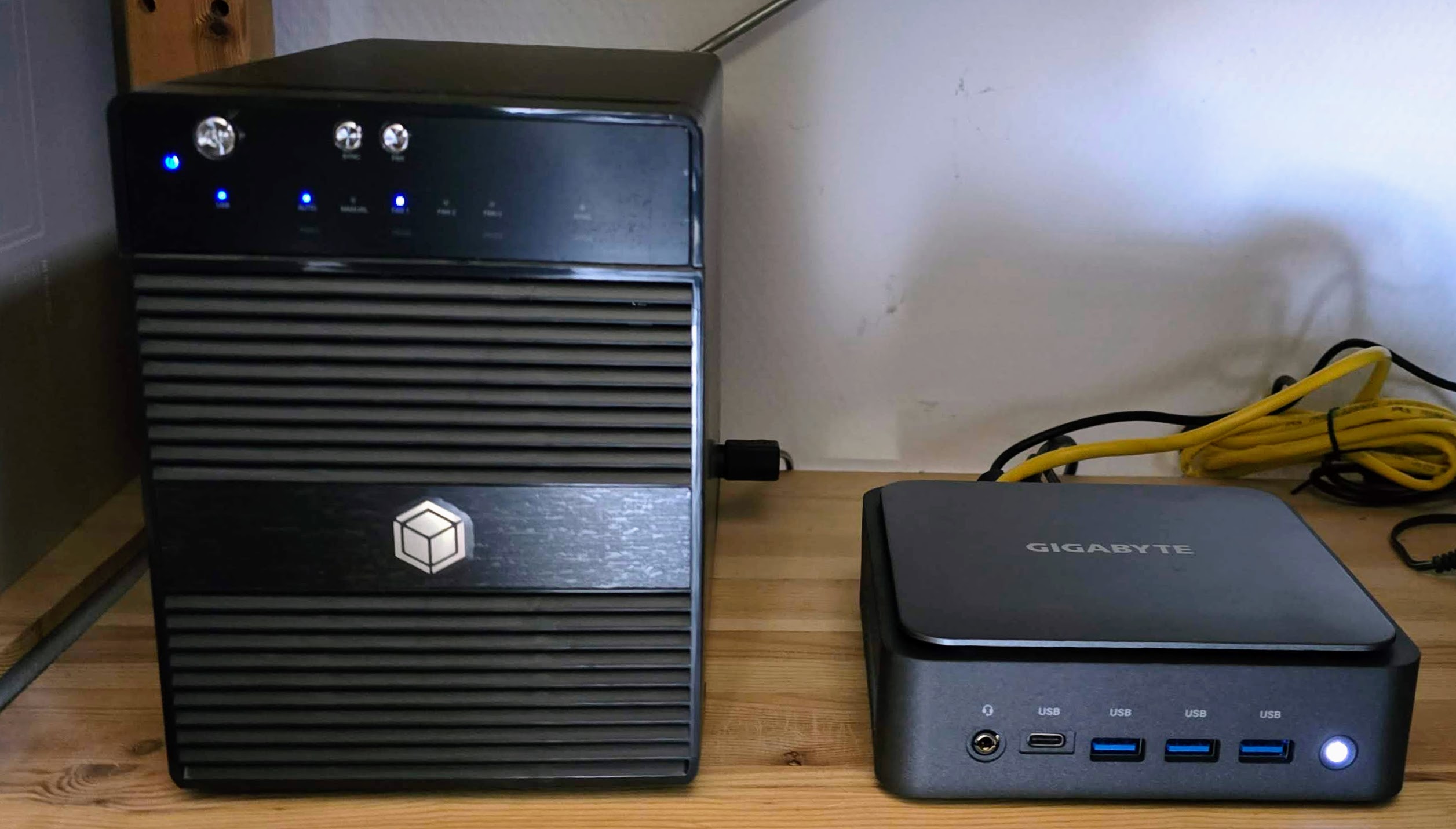Building My New Linux NAS and Server (2024 Edition)
In 2011, I shared a post (Rebuilding and updating my Linux NAS and HTPC server) about rebuilding and upgrading my home NAS and HTPC server. Fast forward to 2024, and my trusty old server finally met its match when the motherboard died. That was the signal to start fresh and upgrade. After careful consideration of alternatives, I built a new, more powerful, and flexible server named curie after Marie Curie the Polish-French physicist and chemist.
After the sudden death of my old server’s motherboard, I considered a variety of options, from off-the-shelf NAS solutions to building another DIY system from scratch. However, none of them offered the combination of power, flexibility, and cost-effectiveness I needed. For instance:
- I looked into the Synology DS423+, which, while user-friendly, seemed underpowered and inflexible for the price.
- I also considered building a DIY NAS with a mini-ITX motherboard, but the difficulty in finding a good case, along with the high prices of mini-ITX boards, pushed me in a different direction.
In the end, I opted for a NUC-style setup with a JBOD disk enclosure, which provides me with the flexibility and performance I was after, at a much more reasonable price.
Hardware and OS selection
The final build included the following components:
- GIGA BRIX GB-BER3-5400 Barebone (AMD Ryzen 3 5400U 4C/8T)
A NUC-style compact system that provides plenty of power with its Ryzen 3 5400U processor. This small form factor device offers four cores, eight threads, and enough horsepower to handle NAS and server workloads with ease. Price: 1,350.40 DKK - IcyBox USB 3.1(Gen2) 4×2.5″/3.5″ SATA3 Disk Enclosure (IB-3740-C31)
For the storage solution, I opted for this JBOD disk enclosure, which supports four SATA drives via USB 3.1 Gen2 at 10Gbps speeds. The enclosure supports UASP (USB Attached SCSI Protocol), ensuring high performance when working with large files. Price: 1,128.80 DKK - WD Red SN700 1TB NVMe SSD
The system disk is a 1TB WD Red SN700 NVMe SSD. It’s fast and reliable, providing the speed I need for system operations while leaving plenty of headroom for future expansion or caching. Price: 550.40 DKK - Crucial DDR4-3200 16GB SODIMM Memory Kit
With 16GB of DDR4-3200 memory, the GIGA BRIX has more than enough RAM for multitasking, running virtual machines, and Docker containers. Price: 222.40 DKK
After assembling the hardware, the next step was the OS setup. Having worked with Linux professionally all my life, it was clear from the start that I’d go with a Linux-based solution. While I briefly considered dedicated NAS operating systems like OpenMediaVault and TrueNAS CORE, I found them too inflexible for my needs.
Initially I decided to continue using Debian as I the last server also did for the last 13 years, but I encountered a hiccup during the setup where Debian didn’t support the GIGA BRIX’s 2.5G network adapter out of the box. After trying various workarounds, I switched to Ubuntu Server, which worked seamlessly with the hardware.
Transferring my 4 x 3.5″ SATA WD Red drives from my old server to the new IcyBox enclosure was straightforward. The mdraid array were automatically detected and assembled during the Ubuntu installation. After the main OS installation on 1TB SSD, I mounted the mdraid array as /home and added it to /etc/fstab to ensure it mounted automatically on boot.
Performance and Issues
Overall, the performance of curie has been stellar. The Ryzen processor and NVMe SSD ensure fast, responsive system operations, while the 10Gbps connection to the IcyBox enclosure allows for fast data transfers with my SATA drives. The new system has handled everything I’ve thrown at it without issue.
However, one downside is the fan on the IcyBox enclosure. The built-in 80mm x 80mm x 20mm fan is louder than I’d like, so I decided to replace it. Unfortunately, most high-quality fans like those from Noctua are 25mm thick and wouldn’t fit in the enclosure. After some research, I found a replacement: the Arctic P8 Slim PWM PST, which is 80mm x 80mm x 15mm. I also ordered a 3-pin to 2-pin adapter based on a guide I found [mackonsti.wordpress.com] Replacing with silent fan on Icy Box IB-3620U3 enclosure. I expect this to make the setup much quieter once installed.
Conclusion
I’m very happy with the final result. curie offers the perfect combination of flexibility, power, and cost-effectiveness, especially compared to more dedicated NAS solutions like Synology, which I found underpowered. The NUC-style GIGA BRIX and IcyBox JBOD enclosure provide a compact yet powerful solution, and Ubuntu Server gives me all the flexibility I need as a long-time Linux user. This build should serve my needs well into the future, and once I resolve the fan noise issue, it’ll be nearly perfect. If you’re thinking about building a modern NAS/server setup, I highly recommend this combination of components for both flexibility and performance.


I like your build, and I’m planning to build a NAS with similar components. What about ECC RAM support? It’s not that easy to find NUC-style systems with ECC support. I found one on Aliexpress that looks quite good and comes at a reasonable price:
https://de.aliexpress.com/item/1005006369887180.html?spm=a2g0o.productlist.main.1.20de2331O9vt3I&algo_pvid=4ff0a84d-db95-4a11-b7c2-6355145dd9dd&algo_exp_id=4ff0a84d-db95-4a11-b7c2-6355145dd9dd-0&pdp_npi=4%40dis%21EUR%21447.63%21277.53%21%21%21449.83%21278.89%21%402103849717370472546754084ef5cd%2112000036928775547%21sea%21SE%21857150460%21X&curPageLogUid=6Eqrfn3c8JtC&utparam-url=scene%3Asearch%7Cquery_from%3A#nav-specification
what do you think about it?